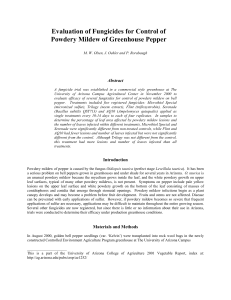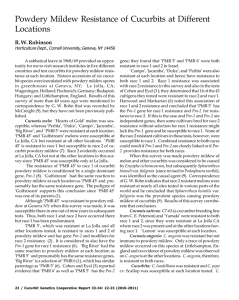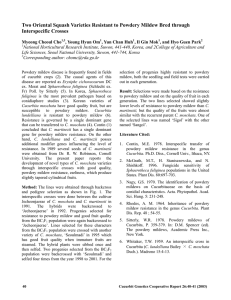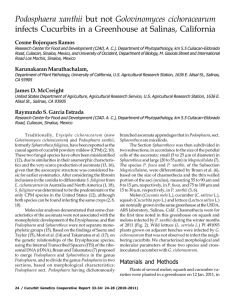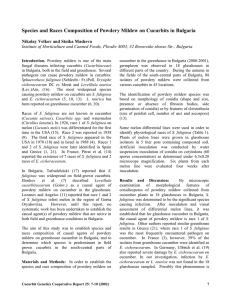Resistant Blister Reaction to Powdery Mildew in Melon PI 313970...
advertisement
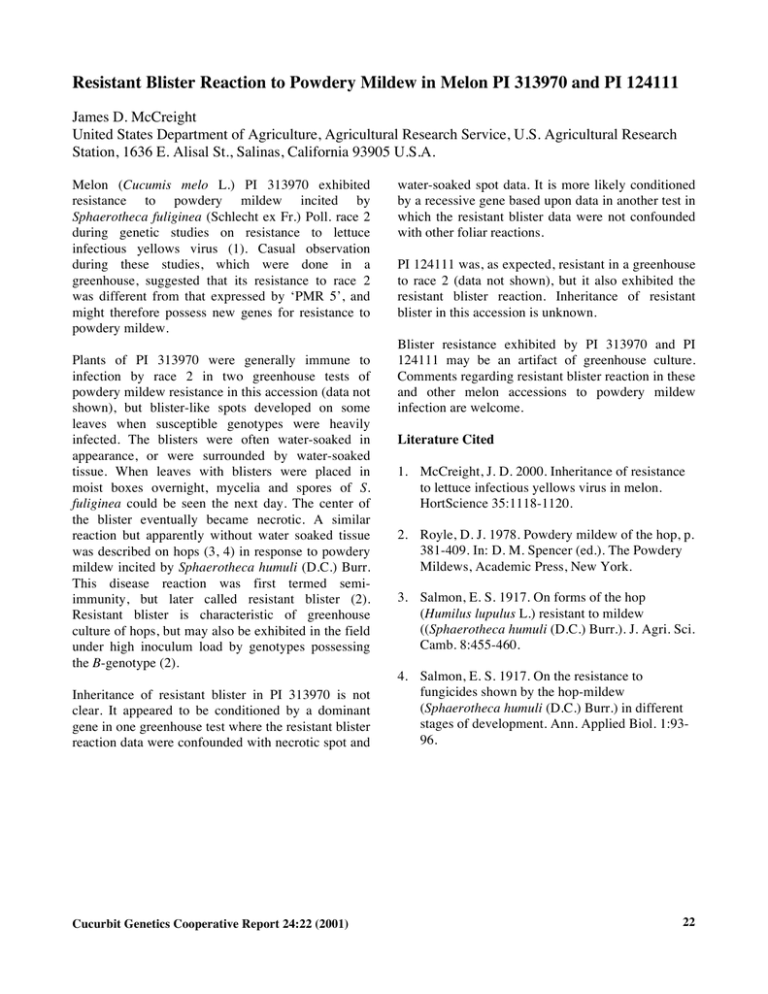
Resistant Blister Reaction to Powdery Mildew in Melon PI 313970 and PI 124111 James D. McCreight United States Department of Agriculture, Agricultural Research Service, U.S. Agricultural Research Station, 1636 E. Alisal St., Salinas, California 93905 U.S.A. Melon (Cucumis melo L.) PI 313970 exhibited resistance to powdery mildew incited by Sphaerotheca fuliginea (Schlecht ex Fr.) Poll. race 2 during genetic studies on resistance to lettuce infectious yellows virus (1). Casual observation during these studies, which were done in a greenhouse, suggested that its resistance to race 2 was different from that expressed by ‘PMR 5’, and might therefore possess new genes for resistance to powdery mildew. Plants of PI 313970 were generally immune to infection by race 2 in two greenhouse tests of powdery mildew resistance in this accession (data not shown), but blister-like spots developed on some leaves when susceptible genotypes were heavily infected. The blisters were often water-soaked in appearance, or were surrounded by water-soaked tissue. When leaves with blisters were placed in moist boxes overnight, mycelia and spores of S. fuliginea could be seen the next day. The center of the blister eventually became necrotic. A similar reaction but apparently without water soaked tissue was described on hops (3, 4) in response to powdery mildew incited by Sphaerotheca humuli (D.C.) Burr. This disease reaction was first termed semiimmunity, but later called resistant blister (2). Resistant blister is characteristic of greenhouse culture of hops, but may also be exhibited in the field under high inoculum load by genotypes possessing the B-genotype (2). Inheritance of resistant blister in PI 313970 is not clear. It appeared to be conditioned by a dominant gene in one greenhouse test where the resistant blister reaction data were confounded with necrotic spot and Cucurbit Genetics Cooperative Report 24:22 (2001) water-soaked spot data. It is more likely conditioned by a recessive gene based upon data in another test in which the resistant blister data were not confounded with other foliar reactions. PI 124111 was, as expected, resistant in a greenhouse to race 2 (data not shown), but it also exhibited the resistant blister reaction. Inheritance of resistant blister in this accession is unknown. Blister resistance exhibited by PI 313970 and PI 124111 may be an artifact of greenhouse culture. Comments regarding resistant blister reaction in these and other melon accessions to powdery mildew infection are welcome. Literature Cited 1. McCreight, J. D. 2000. Inheritance of resistance to lettuce infectious yellows virus in melon. HortScience 35:1118-1120. 2. Royle, D. J. 1978. Powdery mildew of the hop, p. 381-409. In: D. M. Spencer (ed.). The Powdery Mildews, Academic Press, New York. 3. Salmon, E. S. 1917. On forms of the hop (Humilus lupulus L.) resistant to mildew ((Sphaerotheca humuli (D.C.) Burr.). J. Agri. Sci. Camb. 8:455-460. 4. Salmon, E. S. 1917. On the resistance to fungicides shown by the hop-mildew (Sphaerotheca humuli (D.C.) Burr.) in different stages of development. Ann. Applied Biol. 1:9396. 22

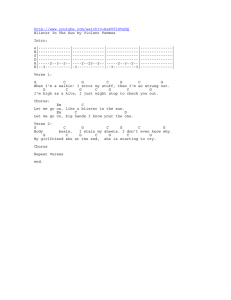
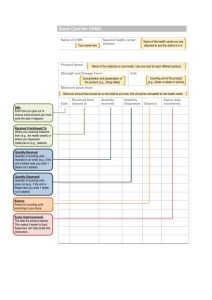

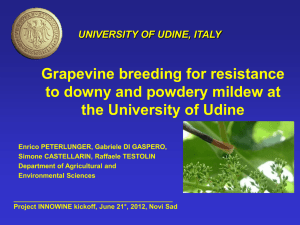
![First Aid Training : Bronze [Power Point]](http://s2.studylib.net/store/data/005424634_1-e0b0e5e602f7c1666ebc2e9ff3f4a1b5-300x300.png)

